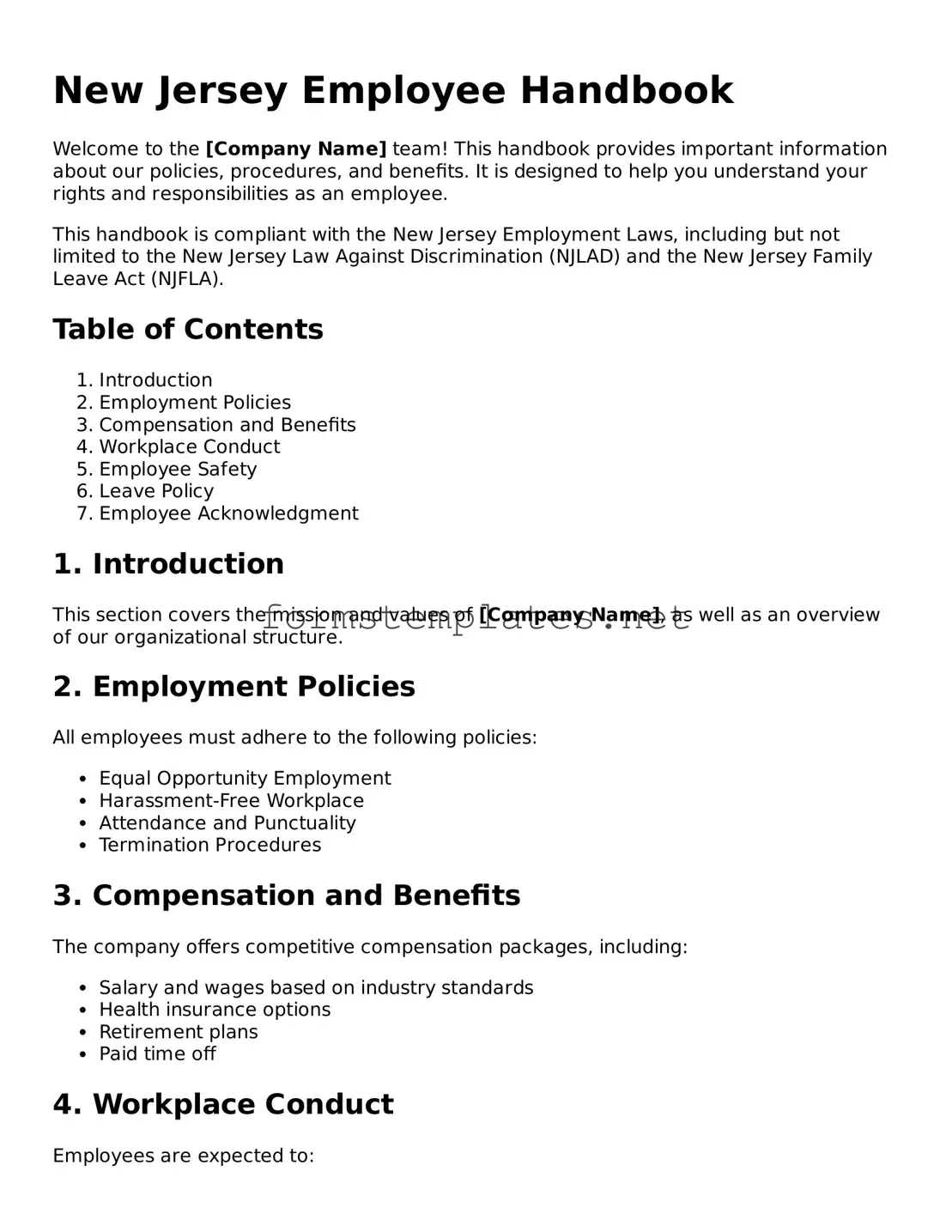New Jersey Employee Handbook
Welcome to the [Company Name] team! This handbook provides important information about our policies, procedures, and benefits. It is designed to help you understand your rights and responsibilities as an employee.
This handbook is compliant with the New Jersey Employment Laws, including but not limited to the New Jersey Law Against Discrimination (NJLAD) and the New Jersey Family Leave Act (NJFLA).
Table of Contents
- Introduction
- Employment Policies
- Compensation and Benefits
- Workplace Conduct
- Employee Safety
- Leave Policy
- Employee Acknowledgment
1. Introduction
This section covers the mission and values of [Company Name], as well as an overview of our organizational structure.
2. Employment Policies
All employees must adhere to the following policies:
- Equal Opportunity Employment
- Harassment-Free Workplace
- Attendance and Punctuality
- Termination Procedures
3. Compensation and Benefits
The company offers competitive compensation packages, including:
- Salary and wages based on industry standards
- Health insurance options
- Retirement plans
- Paid time off
4. Workplace Conduct
Employees are expected to:
- Maintain professionalism at all times
- Respect the rights and dignity of colleagues
- Follow the conflict resolution process
5. Employee Safety
Your safety is our priority. We comply with the Occupational Safety and Health Administration (OSHA) regulations. Employees should report any safety hazards immediately.
6. Leave Policy
This company provides various leave options, including:
- Sick Leave
- Family Leave
- Bereavement Leave
- Jury Duty Leave
7. Employee Acknowledgment
Please sign and return the acknowledgment form, confirming that you have read and understood this employee handbook.
Thank you for being a valuable part of [Company Name]. Together, we can create a positive work environment.
